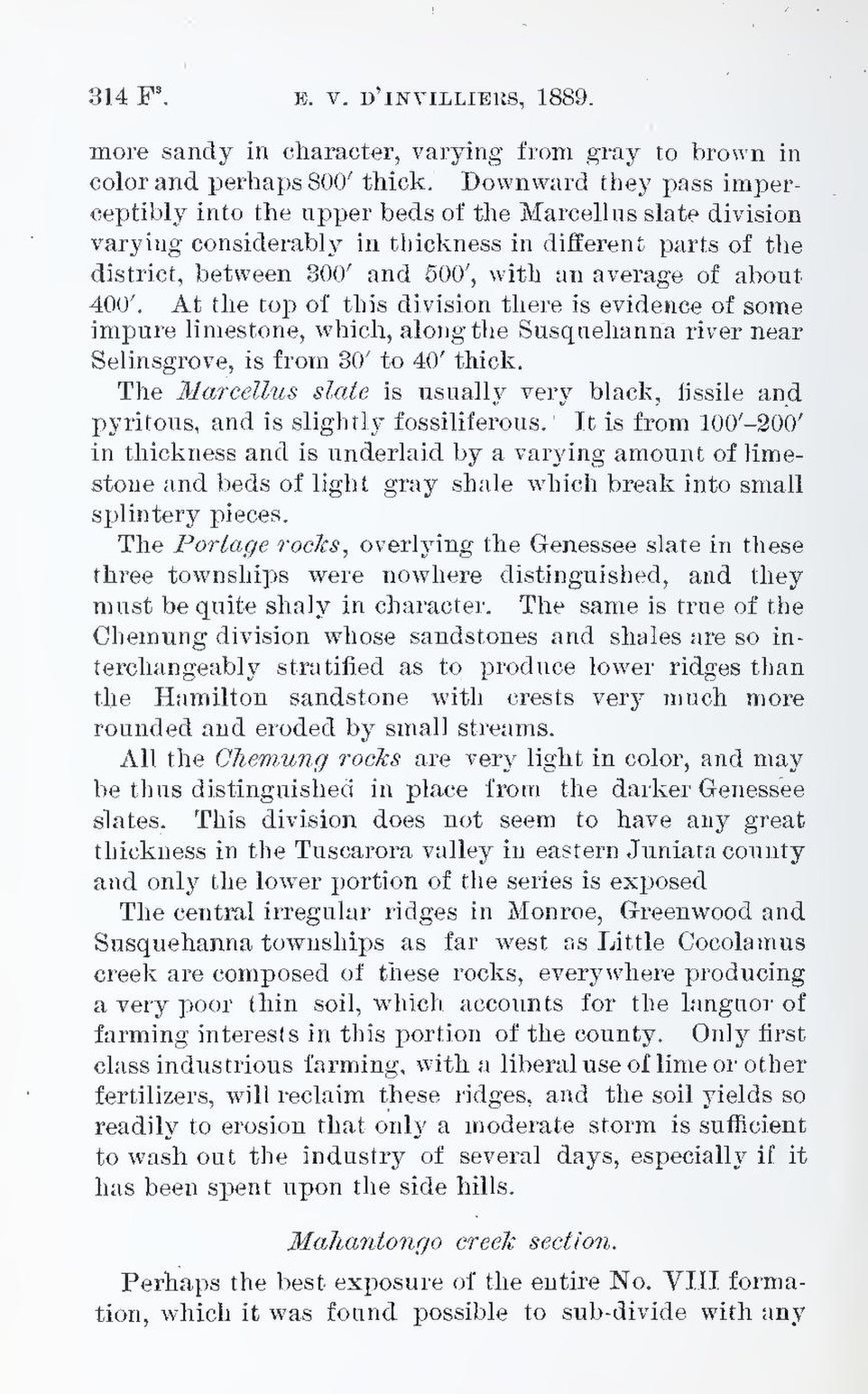more sandy in character, varying from gray to brown in color and perhaps 800′ thick. Downward they pass imperceptibly into the upper beds of the Marcellus slate division varying considerably in thickness in different parts of the district, between 300′ and 500′, with an average of about 400′. At the top of this division there is evidence of some impure limestone, which, along the Susquehanna river near Selinsgrove, is from 30′ to 40′ thick.
The Marcellus slate is usually very black, fissile and pyritous, and is slightly fossiliferous. It is from 100′-200′ in thickness and is underlaid by a varying amount of limestone and beds of light gray shale which break into small splintery pieces.
The Portage rocks, overlying the Genessee slate in these three townships were nowhere distinguished, and they must be quite shaly in character. The same is true of the Chemung division whose sandstones and shales are so interchangeably stratified as to produce lower ridges than the Hamilton sandstone with crests very much more rounded and eroded by small streams.
All the Chemung rocks are very light in color, and may be thus distinguished in place from the darker Genessee slates. This division does not seem to have any great thickness in the Tuscarora valley in eastern Juniata county and only the lower portion of the series is exposed
The central irregular ridges in Monroe, Greenwood and Susquehanna townships as far west as Little Cocolamus creek are composed of these rocks, everywhere producing a very poor thin soil, which accounts for the languor of farming interests in this portion of the county. Only first class industrious farming, with a liberal use of lime or other fertilizers, will reclaim these ridges, and the soil yields so readily to erosion that only a moderate storm is sufficient to wash out the industry of several days, especially if it has been spent upon the side hills.
Mahantongo creek section.
Perhaps the best exposure of the entire No. VIII formation, which it was found possible to sub-divide with any
